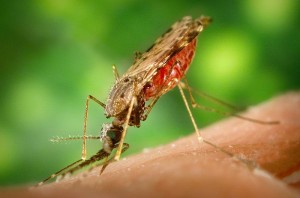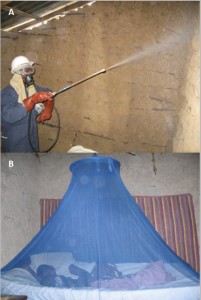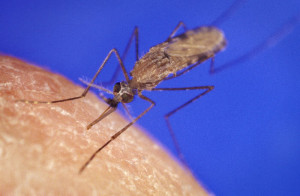
Emergence and spread of insecticide resistance
Vector management is a common strategy for controlling mosquito-borne diseases. Such measures are almost entirely dependent on the use of insecticides. The emergence and spread of insecticide resistance coupled with the meagre number of alternative insecticides poses a huge threat to malaria control programs in particular.
Insecticide resistance is driven by misuse of insecticides, leading to exposure to sub-optimal and tolerable concentrations of insecticide. This can be through poor spraying technique, counterfeit insecticide treated bednets (ITNs) and the use of insecticides as pesticides at varying concentrations.
Furthermore, the insecticides used are generally all single-insecticide formulations e.g the use of pyrethroids on bednets. Although this keeps manufacturing costs down, it drives selection for resistant mosquitoes. Cross-resistance to several classes of insecticide is also an emerging problem in Africa, particularly worrying as there are very few alternative approved insecticides and even fewer in development. Consequently, insecticide resistance is now widespread across Africa.

Mechanisms of Resistance
There are three broadly classified mechanisms of resistance: behavioural, molecular and mechanical resistance. Molecular resistances including target-site mutations and increased metabolism of insecticides are the most studied forms, and so we have a better understanding of the genetics of this kind of resistance. Behavioural resistance is often difficult to measure, as it is heavily influenced by environmental factors. Finally, mechanical resistance describes physiological changes such as thickening of the cuticular layer that reduce the penetration of the insecticide, resulting in suboptimal dosing. The evidence for this form of resistance in mosquitoes is sparse, although some studies have confirmed this mechanism in Drosophila and a few agricultural pests.
Cuticle thickening and reduced uptake
The cuticle structure comprises two main layers, the epicuticle and the procuticle. Below these layers lies the epidermis and a layer of specialised oenocytes. Until now it was not known which part of the cuticle was reinforced to result in insecticide resistance. In a recent study by Vasileia Balabanidoua and colleagues, Transmission Electron Microscopy (TEM) showed that the outer epicuticle was much thicker in resistant mosquitoes compared to susceptible mosquitoes. This was also associated with reduced uptake and internalization of radiolabeled deltamethrin insecticides. Similar findings had been previously demonstrated in Triatoma infestans. Furthermore, resistance was reduced in response to acetone-based insecticides which circumvent lipid barriers in the cuticle, indicating a critical role of lipid components. These researchers go on to investigate the underlying molecular mechanism of cuticular-based resistance.
Role of Cuticular Hydrocarbons
Oenocytes synthesise cuticular hydrocarbons (CHCs) from long-chain fatty acids which prevent desiccation of the insect. Previously, P450 enzymes such as those in the CYP4G subfamily have been shown to catalyse CHC synthesis. Since orthologues of these proteins are commonly overexpressed in resistant Anopheles mosquitoes, the role of CHC synthesis was investigated further.
CHC profile
As suspected, Gas Chromatography (GC) analysis by both GC-flame ionization detector (FID) and GC-MS Gas chromatography (GC) revealed a ~29% increase of CHC’s in resistant female mosquitoes compared to susceptible phenotypes. No difference was found in the molecular forms or distribution of CHCs.

CYP4G proteins function and cellular localisation
Immunofluorescence staining using high-magnification confocal microscopy revealed the high abundance and dispersion of CYP4G17 proteins throughout the oenocyte cytoplasm. CYP4G16, whilst also abundant, was found to localise at the periphery of the cell, most likely associated with the plasma membrane- a unique location for P450 enzymes. Finally, the function of CYP4G16 was confirmed as a functional oxidative decarbonylase that produces hydrocarbons similarly to its orthologue CYP4G1/2 in Drosophila.
At last, evidence supporting the hypothesis of cuticular resistance to pyrethroids in mosquitoes has been provided. From here, future studies will need to correlate knockdown or overexpression of CHC synthesis pathways with phenotypic data. With the event of modern molecular techniques such as CRISPR-CAS9, these sorts of experiments are more readily within reach.

Comments